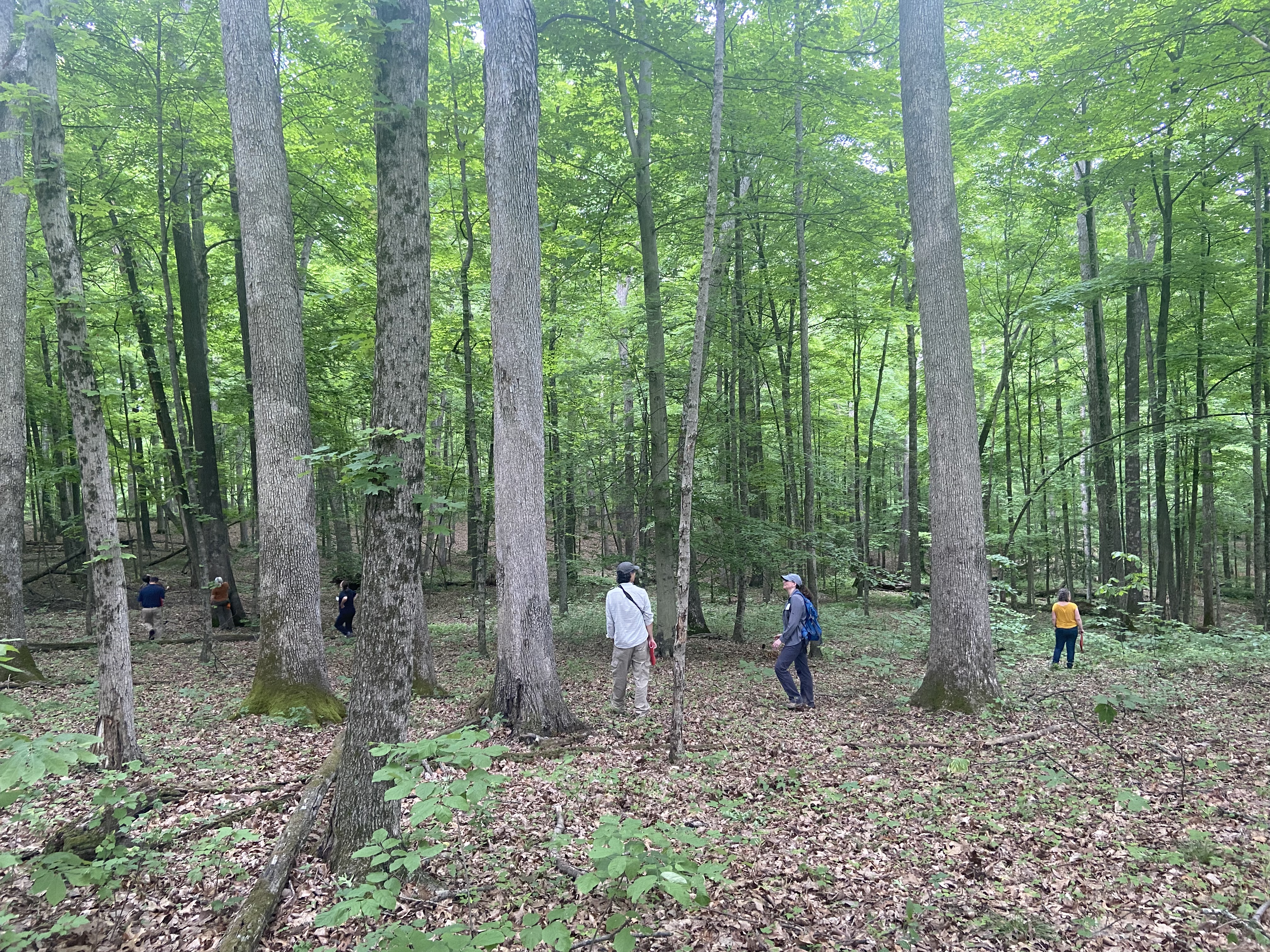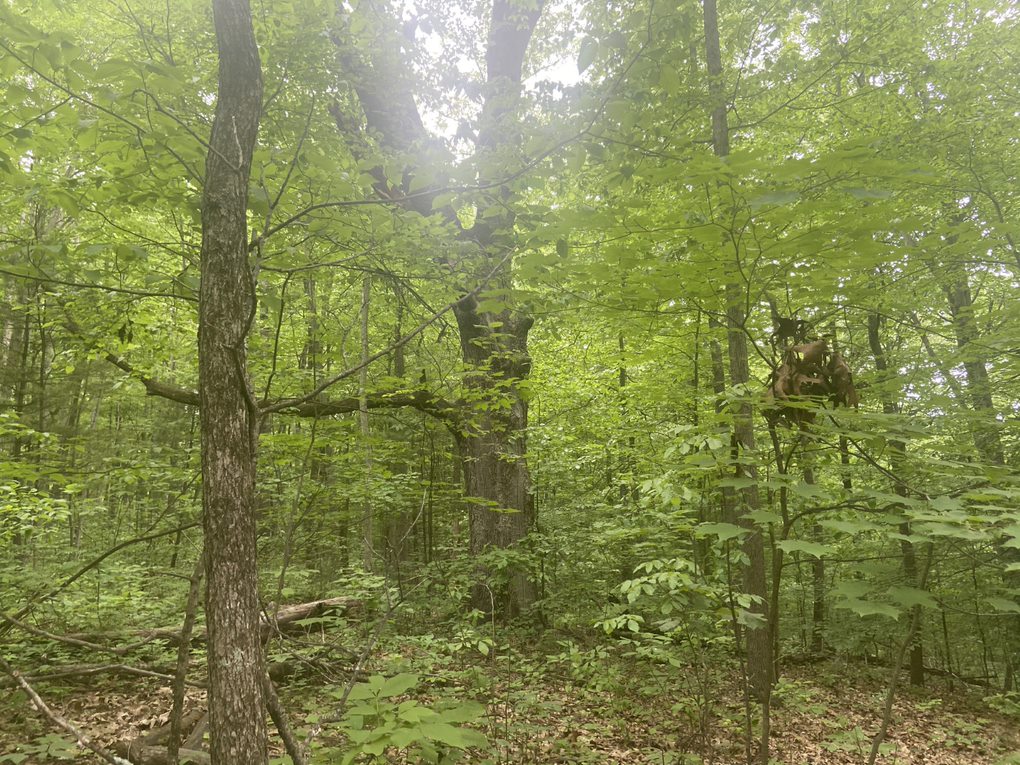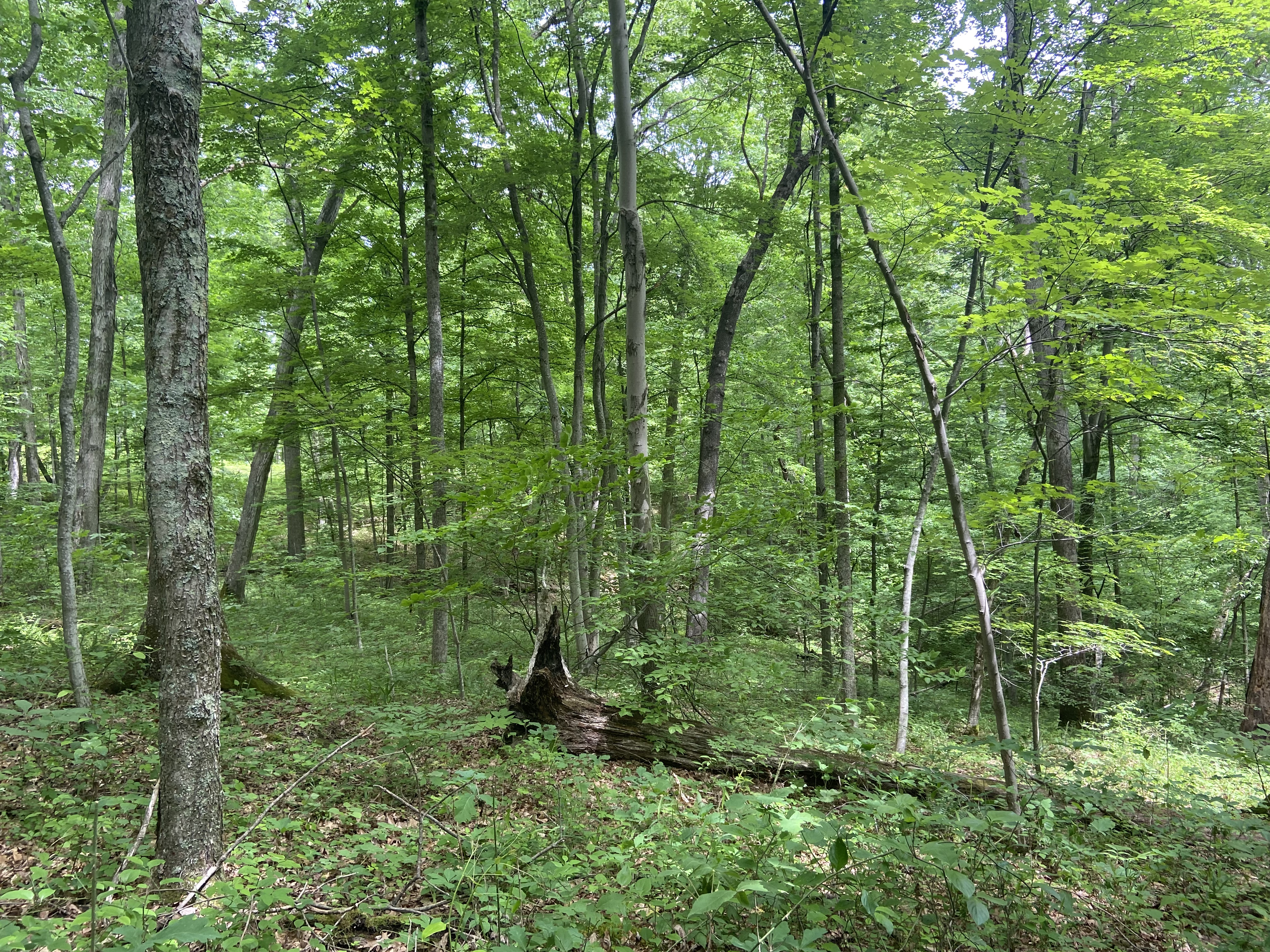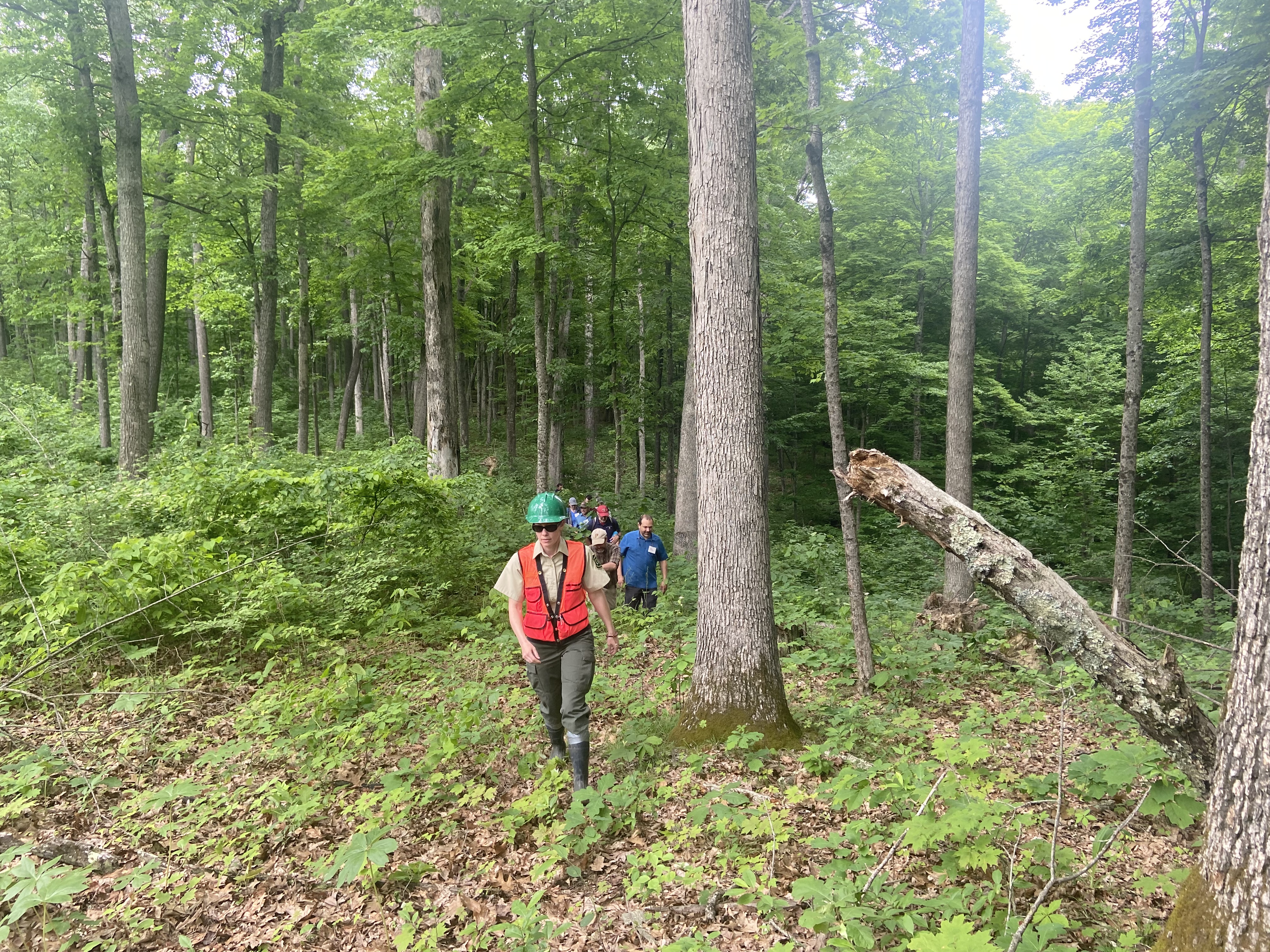
A team of natural resource specialists from the Ohio Hills, regional managers, and scientists came together for a three-day workshop in May 2022 to develop the study design for the ASCC project site. Overarching management goals for the project include:
- Manage for a compositionally and structurally diverse sustainable oak ecosystem
- Consider visual aesthetics where timber harvesting is recommended
- Support Ohio’s timber industry by promoting important commercial species such as white oak
- Mitigate risks of invasive species establishment or spread
- Sustain and promote organismal and functional diversity
- Protect known or discovered archaeological resources
- Employ all applicable water quality best management practices during timber harvest
- Support and provide recreational opportunities, including hunting and wildlife watching, through diversifying forest age and structure
- Support demonstration and science delivery
Each ASCC site utilized three adaptation options (resistance, resilience, and transition), as well as a control or “no action” treatment where no management takes place. The team developed a set of Desired Future Condition statements, Objectives, and Tactics for each major climate adaptation trajectory. These three trajectories are briefly summarized below:
NO ACTION
allow forests to respond to climate change without direct management intervention
Since climate change impacts all forests globally, we cannot maintain a true “control.” With this in mind, we consider an approach in which forests are allowed to respond to climate change in the absence of direct silvicultural intervention as an appropriate baseline for many questions.
RESISTANCE

maintain relatively unchanged conditions over time
Management Goals:
- Maintain an oak-dominated stand where understory matches overstory
- Relative density 70%
- Resistance to disease (oak wilt and future novel diseases)
- Regeneration matches composition of the overstory
- Low incidence of invasive species
- Protect state endangered and threatened wildlife species (bats, birds, timber rattlesnake)
- Pre-commercial and commercial treatments
- Lower stand density to ~70% relative density through thin from below
- Overstory thinning as needed
- Promote advanced regen of oak-hickory component & prepare for future recruitment
- Prescribed burn to favor oaks
RESILIENCE
allow some change in current conditions, but encourage eventual return to original conditions

Management Goals:
- Multi-cohort stand with diversity of ages, structures, species, and light conditions within natural range of variation
- Natural regeneration of oaks and hickories
- Maintain large oaks
- Promote wildlife habitat and herbaceous understory
- Introduce fire throughout treatment
- Low incidence of invasive plant species
- Protect state endangered and threatened wildlife species
- Resilience to wind, drought, ice storms, fire, and disease
Strategies & Approaches:
- Thin matrix to ~70% relative density through thin from below
- Overstory thinning as needed
- Expanding gap / irregular shelterwood with variable retention (two entries).
- Range of 1/10th ac to ½ ac gaps based on desired species (~20% of stand)
- Total ~4.5 acres
- Mechanical and chemical site prep
- Shelterwood prep cut
- Prescribed burn following harvest
- Natural regeneration of oaks and hickories; accept yellow-poplar, sassafras, and others in gaps
TRANSITION
actively facilitate change to encourage adaptive responses

Management Goals:
- Complex, multi-aged, variable structure
- Native and novel future-adapted, drought-tolerant species (pine-oak woodland)
- Maintain 50% canopy cover of white oak
- Maintain productive forests that align with future conditions
- Accommodate mixed to high severity levels of disturbance (drought and fire)
- Low incidence of invasive species
- Resistance to disease
- Protect state endangered and threatened wildlife species
Strategies & Approaches:
- Thin matrix to ~70% relative density through thin from below; overstory thinning as needed
- Patch clearcuts with residuals in clumps
- Leave seed trees
- 10 acres in gaps that are 1 acre in size (50% gaps, 50% matrix)
- Prescribe burn
- Chemical site prep
- Plant mix of conifers and xeric deciduous species in clusters
- Based on shade tolerance (silvics) in a grid across stand (openings, edges, and matrix)
- Seed sourcing from Missouri and Arkansas to match Ozark-like climate projections
- Plant C4 grasses mix from Ozarks
- Consider shrubs for wildlife habitat


